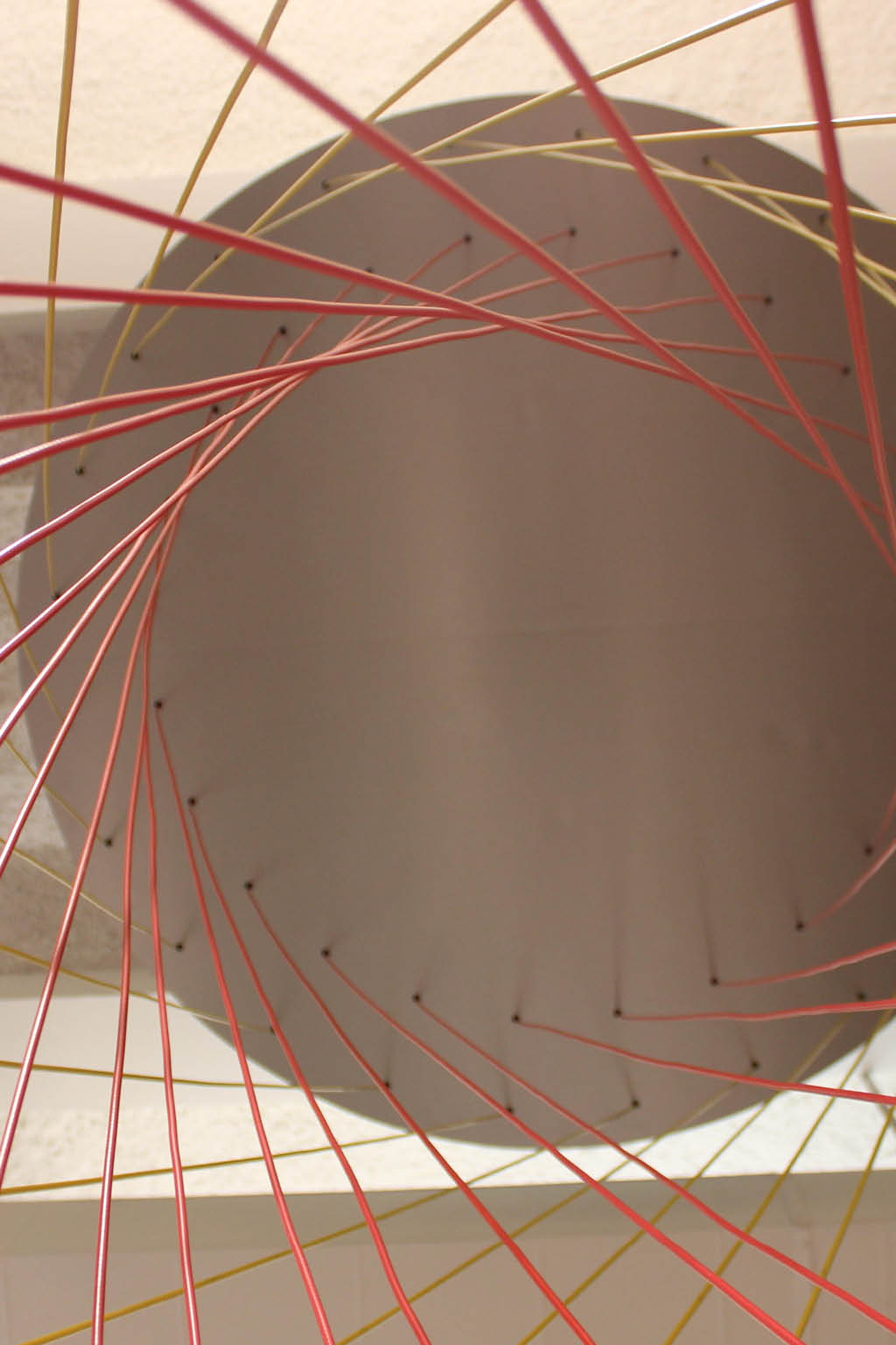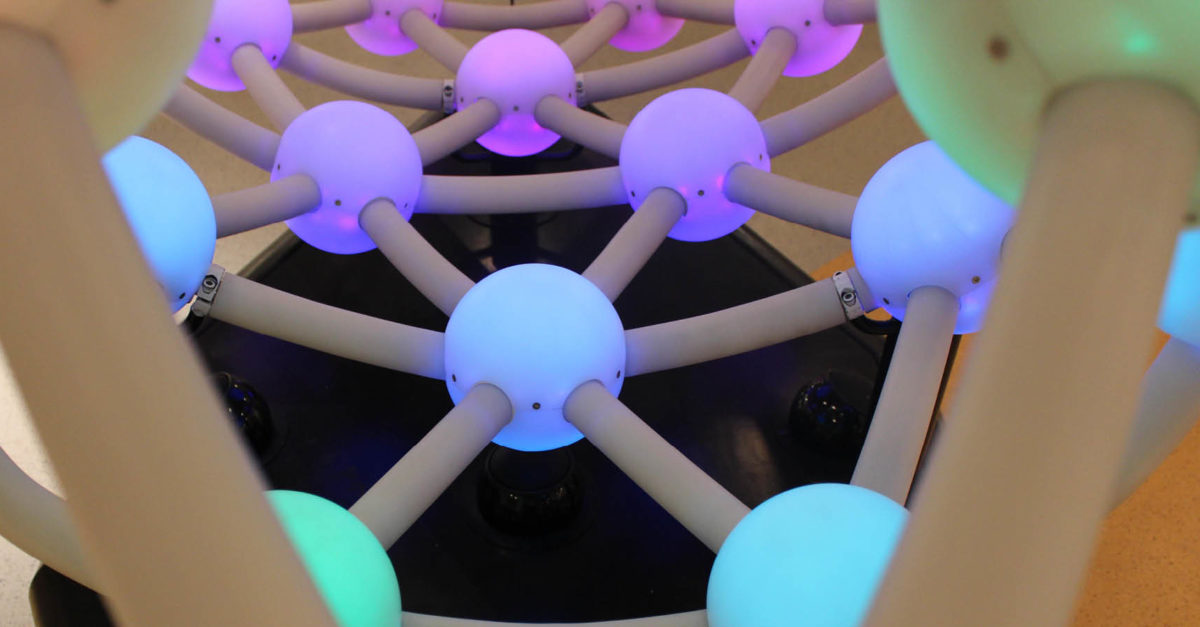A Formula for Fun
A well-known math professor once said, “Mathematics is food for the brain.” And, at the National Museum of Mathematics (also known as MoMath) in New York City, the aim is to keep your brain well-fed in the context of fun. MoMath CEO and executive director Cindy Lawrence talks about this innovative institution’s history, exhibits, and perception-changing goals—all of which add up to make it the coolest thing to ever happen to math.
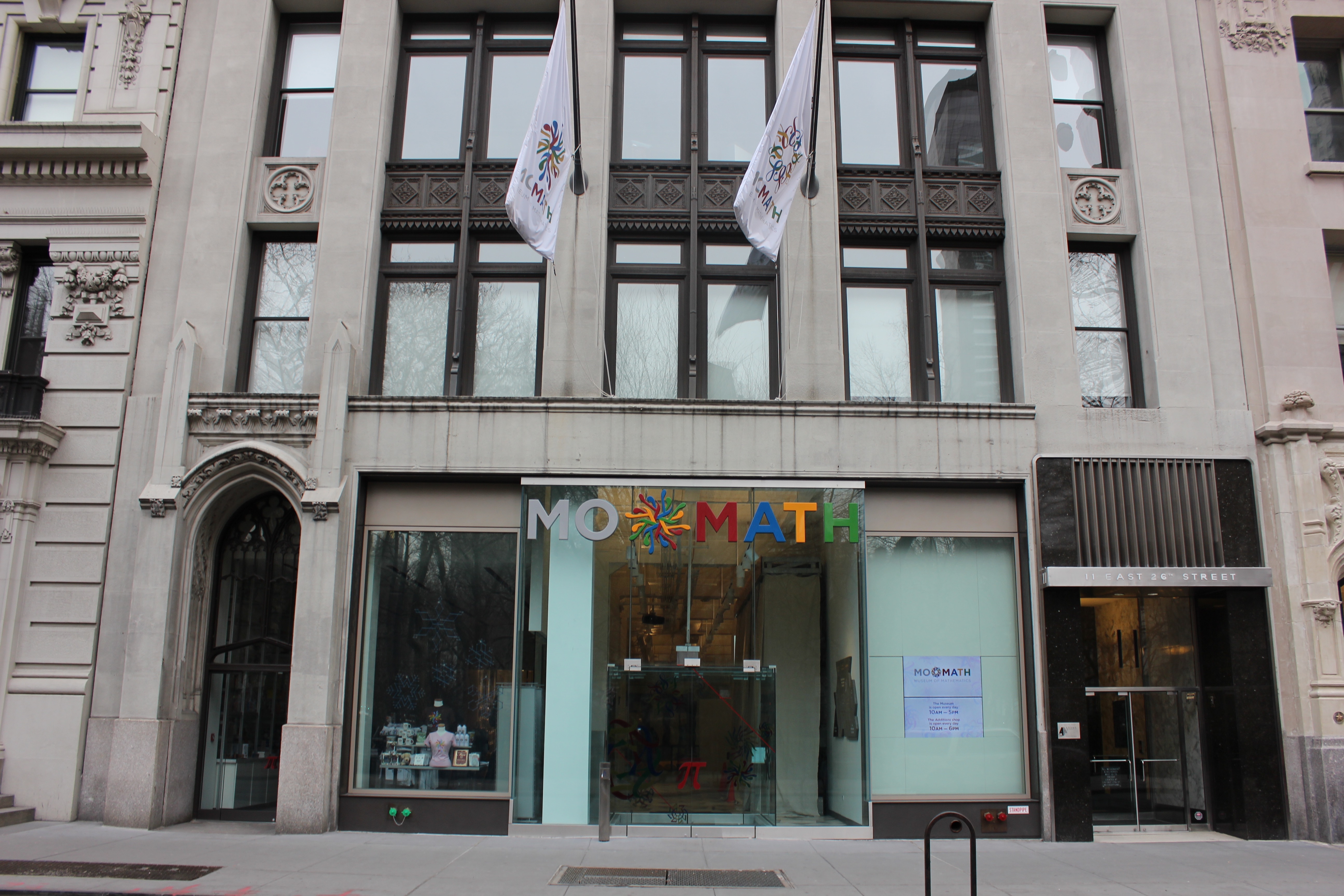
How did it all begin with MoMath?
There was a small math museum—the only one in America—on Long Island that had shut down. A mathematician named Glen Whitney was dismayed to hear this and came up with the idea to open a larger-scale museum of math. But when we started telling people about it, the response was almost uniformly negative: everyone assumed nobody would come.
We had a little bit of money to get started, so we built a traveling math exhibit, which made its debut in June of 2009. It quickly became popular, especially with math teachers, who, prior to this, hadn’t had a place to take their students to get them excited about mathematics. This proved that having a math museum was a good idea, and we ended up raising about $23 million to open a permanent location. What was originally imagined as a 5,000-square-foot museum in the suburbs of New York became a 19,000-square-foot facility off Broadway.
Why do you think it is so important for people to have that interest in math?
At its core, math is about logic and problem-solving—much like life. Learning to be a critical thinker is extremely important. There’s also a beauty in the “aha!” moment that’s similar to how an artwork or a piece of music can be beautiful.
How does MoMath pique such interest?
When people hear the phrase “math museum,” they envision that there will be calculators, rulers, graph paper, and mathematical symbols, and that’s not the case. When you walk in, you see a world of strange but beautiful objects, including our most popular exhibit, a functional, adult-sized tricycle with square wheels. You can also see cars riding on a track over your head that seems to be twisted in an unusual way. Or you can ride on a sled that glides over very bumpy-seeming acorn shapes, yet somehow provides a smooth ride. It’s a very hands-on, immersive, physical, full-body environment.
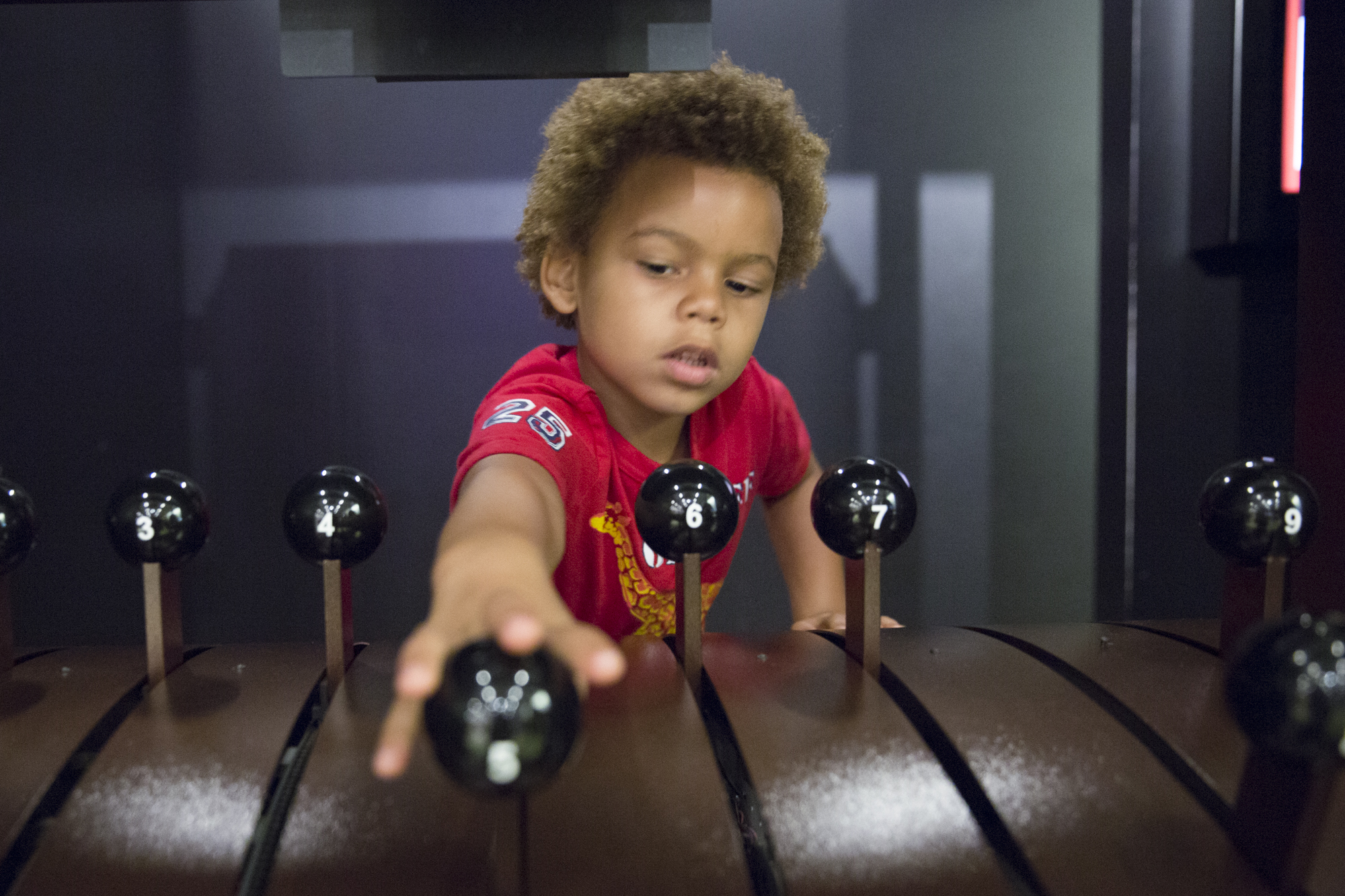
Is MoMath geared toward kids?
We definitely see primarily school groups during the week, but on the weekend, we are about 50 percent adults and 50 percent kids. We’re a museum that appeals to all ages, from senior citizens to college students to young adults and young professionals who come on date night or with a group of friends.
What are some of the other popular exhibits at MoMath?
Everyone seems to have their own favorite. But one of our most popular exhibits is a basketball exhibit called Hoop Curves. You take a free throw and a camera system records the height at which the ball was launched, the speed, and the angle, and whether the shot went in. Another very popular exhibit is called Human Tree, where a camera system takes your image and projects it onto a large screen, only it removes your arms and replaces them with copies of your torso, and then the arms on that torso are replaced by even smaller copies of your torso. As you wave your arms around, you become like a tree of many images of you, all waving in the wind.
At another exhibit, people can paint a picture, and no matter what brushstrokes they use, the picture is beautiful because whatever’s painted is repeated symmetrically. I could go on and on, but those are a few crowd-pleasers.
What does your free public presentation series, Math Encounters, add to the MoMath experience?
Math Encounters came out of a need to have a meeting place for like-minded math enthusiasts. For over eight years, it has served as a gathering space and a place to enjoy hands-on math presentations. We’ve been very successful in finding engaging research-level mathematicians for the lectures, which have spanned all kinds of interesting areas in which you’d never think math would be involved. A recent talk focused on how math is used to convict or vindicate people in court. We’ve had Math Encounters on math and dance, math and art, and math and music. Recently, we brought in a particularly gifted mathematician, Princeton professor and Fields Medalist Manjul Bhargava, for regular visits over the course of a year. He’s most recently discussed the relationship between math and magic, using card tricks.
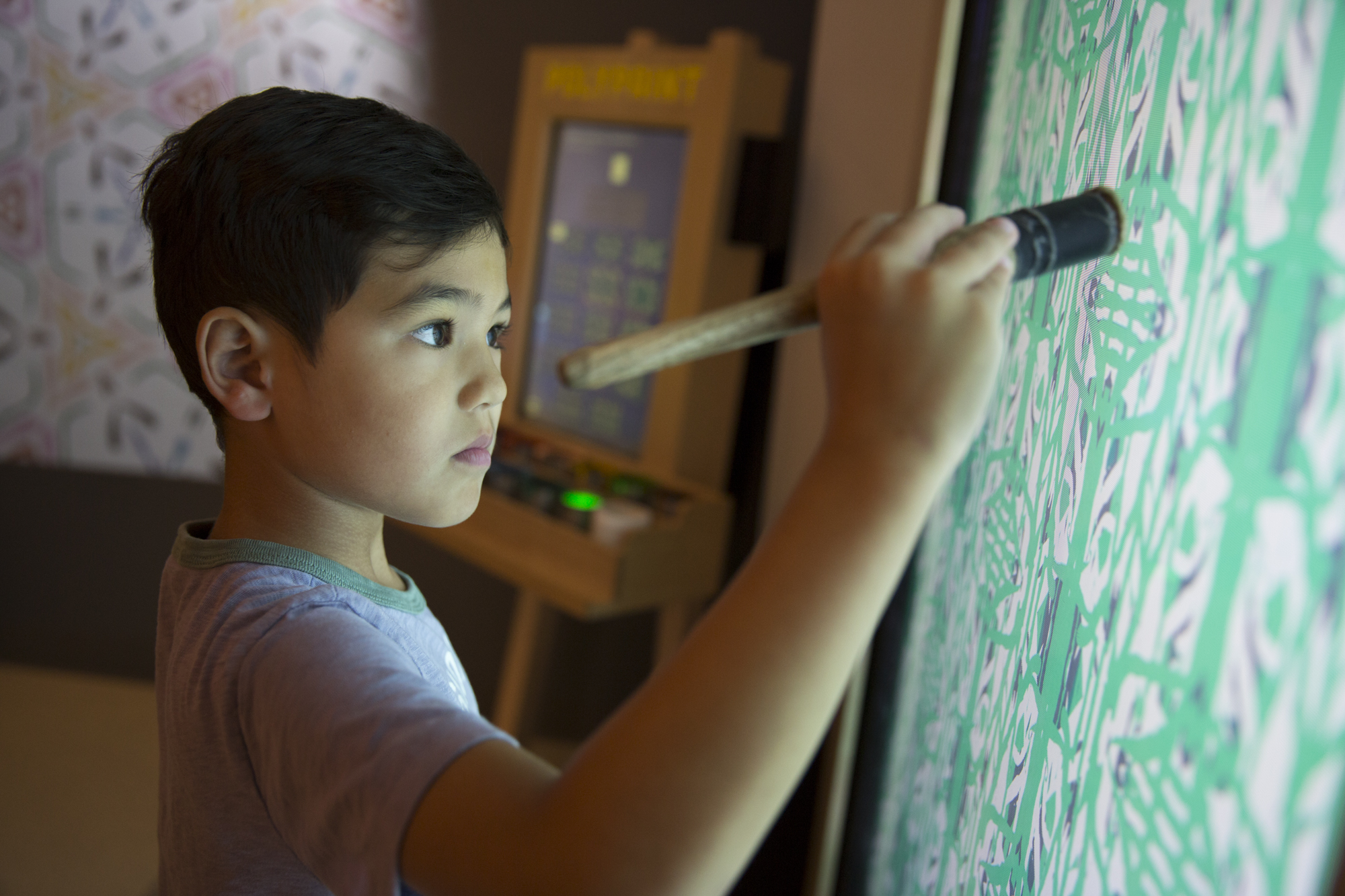
What kinds of special events do you have?
We run all sorts of events throughout the year, but we had a big celebration of Pi Day a few years back. Pi is 3.141592653…, so we dubbed March 14, 2015, the Pi Day of the Century. To celebrate, we did a lot of things, including a giant demonstration of pi involving over 1,000 people, a pi countdown clock that ticked down the time until 9:26 p.m., and, of course, free pie for all.
Our largest-ever public event, Pythagorize the Flatiron, took place in 2013. We realized that the numbers representing the date December 5, 2013—or 12/5/13—could represent the sides of a right triangle. We also discovered that the shape of our very close neighbor, the Flatiron Building, forms a right triangle that roughly meets those very proportions. So we sent out an email, inviting everybody to come celebrate the Pythagorean theorem with us by measuring the sides of the Flatiron Building with glow sticks and proving the Pythagorean theorem. I expected a few hundred people, but we ended up with about 3,000 people surrounding the building. It was an amazing event.
The very broad range of people who came is interesting as well. Of course, we had parents with their children. But we also had groups of senior citizens, college students, and high-school students there, just because they thought it was interesting and fun. It showed that there’s a real appetite for mathematics—and that this eager interest has been under the radar for too long.
What would you say is the most satisfying part of what you do?
By far, it’s when I’m in the museum and I see the look of delight on people’s faces or hear somebody say, “That’s so cool!” That’s exactly the impression that we’re trying to convey, and you just don’t normally see that kind of reaction to mathematics. Not so long ago, I was sitting outside the museum on a weekend, and I saw a child run up to the front door ahead of his parents, jumping up and down excitedly and saying, “It’s MoMath! We’re here! Come on!” What a beautiful thing that was. I see that kind of enthusiasm all the time.
One other example stood out. A bunch of middle-school boys were running excitedly down the street, almost racing each other. For one brief, silly moment I wondered if they were racing to the Museum of Math. But we’re right across the street from Madison Square Park, so I assumed they were going there to play ball. To my delight, though, they all ran into the museum. That just blew me away.

What kinds of interesting feedback do you get from MoMath visitors?
We have a lot of stories of parents bringing in one child who likes math and another who doesn’t and then not being able to leave because the non-math-loving child wants to stay. I also love talking to people from other places. Last week, somebody from California told me, “This is my kids’ favorite museum in the whole country. We keep coming back every time we’re in New York. They don’t want to go anywhere else.” Many other people have told me this—which is really saying something because there are so many absolutely phenomenal museums in New York.
In fact, a few years ago, a group associated with TripAdvisor was doing a top 50 list of various things most worth traveling for. And wouldn’t you know, MoMath was named as the number one museum worth traveling for in New York State! Given the many wonderful museums in the city, let alone in New York State, we were very honored to be recognized in
this way.
What do you hope people walk away with after visiting MoMath?
It depends what they walked in with. I hope that people who love math are happy to find some deep mathematics embedded in our exhibits and leave having experienced some new moments of delight. If people disliked or feared mathematics before, I hope they leave realizing that math covers a much broader landscape—and that it’s more compelling and fun—than they thought.
For more information, visit momath.org. Photography by: National Museum of Mathematics.
